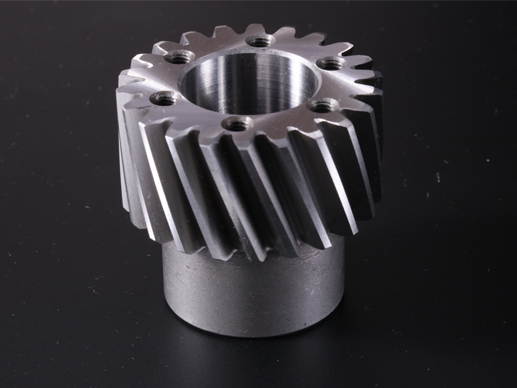
Industry news|2022-04-13| admin
Gears can be divided into the following categories according to different classification standards, namely! Below, for reference.

1. Cylindrical gear:
3. According to the structure of the parts, it can be divided into disk teeth and shaft teeth, and according to the tooth shape, it can be divided into straight teeth and helical gears;
Use dry paralleling to connect power and motion transmission details. Such as engine ignition timing. Transmission speed changes, etc.
2. Bevel gear:
3. According to the tooth shape, it can be divided into spur gears and spiral bevel gears;
b. Fork or interdigital axles used to transmit and select power and motion, such as the reducer and differential of the rear axle.
3. Gear ring:
The synchronizer ring gear of the variable speed synchronous control system belongs to the outer ring gear, the sliding gear sleeve of the variable speed continuous power assist and the gear ring of the planetary speed change transmission belong to the inner gear ring and so on.
4. Special purpose gear:
Such as oil pump gear, speedometer worm, steering rack, etc.
5. According to the process:
Semi-finished gears, bevel gears, internal gears, spur gears, helical gears, worm gears and worms.
6. According to the gear ratio:
1. Fixed transmission ratio - circular gear mechanism (cylinder, cone)
b. Variable transmission ratio - non-circular gear mechanism (oval gear).
7. According to the relative position of the axles:
Plane gear mechanism, helical gear drive, spur gear drive, rack drive, external gear drive, internal gear drive, herringbone gear drive, space gear mechanism, bevel gear drive, staggered helical gear drive, worm gear drive .
8. According to the manufacturing method:
It can be divided into rolling gears, sintering gears, casting gears, cutting gears, etc.
9. According to its appearance:
Divided into cylindrical gears, non-circular gears, bevel gears, racks, worm gears.
10. Press the surface where the gear teeth are:
Divided into external gears and internal gears.
11. According to the tooth line shape:
Divided into spur gears, helical gears, herringbone gears, curved gears, etc.

Calculation method of gear modulus: distance between two teeth (from one point of the first tooth to the same point of the second tooth) ÷ 3.14 = modulus
1. Rack:
It is a special gear with teeth distributed on a rod. Racks are further divided into spur gear racks and helical gear racks, which are paired with spur gears and helical gears respectively; the tooth profile of the rack is straight rather than involute (flat for the tooth surface), equivalent to A cylindrical gear with an infinite index circle radius.
2. Features:
(1) Since the tooth profile of the rack is straight, the pressure angle of all points on the tooth profile is the same, which is equal to the inclination angle of the tooth profile. This angle is called the flank angle, and the standard value is 20°.
(2) Any straight line parallel to the peak line has the same pitch and modulus.
(3) The straight line parallel to the tooth top line and the tooth thickness equal to the width of the tooth slot is called the dividing line (center line), which is the reference line for calculating the size of the rack.
3. Parameters:
The main parameters of the rack are: tooth slot width, tooth tip height, tooth root height, tooth height, tooth thickness, tooth root circle radius, etc.
